COMBAT SHILLING: A LIVE PPV EVENT
Author: SKULLFUCKERS Staff
First published 2023/12/30
Last month, two of the most anticipated visual novels of the year—the latest work from darling scenario writer Setoguchi Ren’ya, Hira Hira Hihiru, and the first release from CRAFTWORK (of Sayooshi fame) in twenty-two years, Geminism—dropped just a week apart. Erogamers the world over were beside themselves, wracked with choice paralysis, posting around discord servers begging (thru DMs) for help… that’s where SKULLFUCKERS comes in. We have devised a solution: the world’s FIRST (probably) competitive tag-team eroge review. I will be reviewing Hira Hira Hihiru alongside my friend Dr. Dysphoria, who you might remember from the Gerokasu review, while Zodi and Gren will be reviewing Geminism. STEMA has never been this ruthless! The stakes have never been higher!! And the best part is: you, dear reader, get to decide who won!!! To cast your vote, all you have to do is purchase a copy of the game that piques your interest from any participating digital storefront (which is all of them).
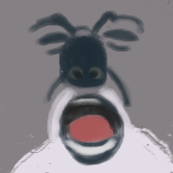
So, without any further ado…
LET’S GET READY TO REVIEW VISUAL NOOVEEEEEEELLLLLSSSSS

Hira Hira Hihiru

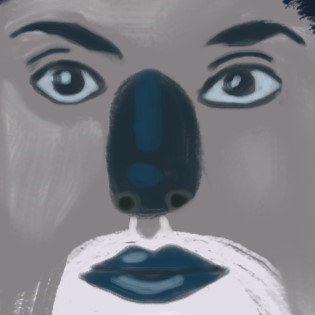
First, as always, some context: this was published by one ANIPLEX.EXE—a subsidiary (est. 2019) of, you guessed it, the anime giant Aniplex who fund and publish games from established eroge brands and creators. They are best understood as a sort of ‘patron of the arts’ program; their producer Shimada Hiroki is a lifelong eroge fan who claims he bases decisions about who to work with primarily on his own personal taste in creators, and has enough faith in them to essentially let them make whatever they want. I believe it, too—in the same interview from 2020 he raves about Setoguchi’s writing style, and, well, here we are today. ANIPLEX.EXE’s business model revolves around courting an international audience with games that are short, cheap, not pornographic, and released simultaneously in Japanese, Chinese and English. They’re far from the first to do this, but they are probably the best yet, and come off as making a sincere effort to introduce the talents of eroge creators to a new audience rather than as a cynical cash-grab.
This time around, ANIPLEX.EXE have commissioned the sophomore work of BA-KU, a fairly opaque brand that seemingly consists of prodigy scenario writer Setoguchi Ren’ya (SWAN SONG, Golden☆L–fuck, I mean, KIRA☆KIRA) and our favourite eroge podcaster-turned-producer Tanimichi NON, now going by “taninon”—we don’t know much about their inner workings, so I’m basing this on the fact that Setoguchi and taninon represent two of the just three names (the third will be revealed later in this article for dramatic effect) that appear in the credits of both of their games so far. taninon has been friends with Setoguchi since high school; he’s the reason Setoguchi was hired at FlyingShine and started writing eroge in the first place and now, almost twenty years later, the two of them have a brand to call their own.
As you might expect from someone with that backstory, Setoguchi’s work does not draw its inspiration from other eroge (to this day, I’m not convinced he’s ever played one) but from literature, especially Russian literature. This is why his games have always eschewed the strict ADV format of fitting lines into bottom-of-the-screen textboxes in favour of NVL presentation, where he can drop entire paragraphs at a time, but it extends to the tone and themes of his writing too. Setoguchi’s stories are painfully engrossing, grounded, and uncompromising; he has a reputation for being the king of utsuge, or ‘depressing games,’ a label every bit as worthlessly nebulous as it sounds, but one that is quite appropriate in this specific case as his work is in no small part about depression and other forms of mental illness. He has a penchant for depicting, often in the first-person, the brutal descent of a character who initially appears healthy or stable into the depths of these conditions, sparing no expense in portraying the alienation and destructive impulses that come with the feeling that you have no place in society. Setoguchi has spun a career out of this feeling and amassed an immaculate body of work to show for it: nineteen years, ten novels, six games and counting without a single dud. Which brings us to…

Kinukawa is my son and a good boy and I love him and I would do anbything to protect him
Hira Hira Hihiru is, in my opinion, a serious achievement. It’s one of the most graceful and mature visual novels I’ve ever read, and probably the only one that I would genuinely, emphatically recommend to everybody I know—friends and family, online and offline acquaintances, English readers and Japanese readers alike. It’s accessible and cheap, yet its audiovisual qualities are as professional and refined as its absorbing, eloquent writing. Its narrative possesses a universal appeal, tackling subjects that are or will be relevant to all of our lives with the care and depth that they call for. This is a game that deserves your attention, and hopefully me and my teammate Dr. Dysphoria (who, incidentally, is not Ternasyl—I said it in red so you know it’s the truth), can show you why.
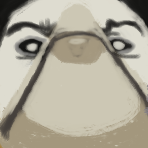
Our story, set in the Taisho Era (1912-1926), opens with the tragic scene of a teenage girl's funeral. Evocative descriptions of the mourners, complemented by the simple animation of smoke from incense burners wafting through the air, draw the reader into the quiet, melancholy atmosphere. But as the loved ones of the deceased struggle to endure the ceremony and restrain their overwhelming sadness, suddenly, the lid of the coffin begins to shift—and the pale and emaciated body of the dead girl lurches out and crawls across the floor, one terrified relative shrieking, "It's a hihiru!"
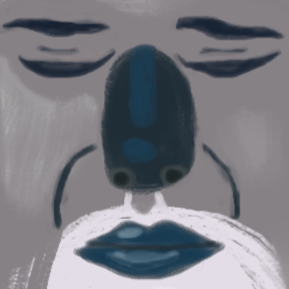
Hihiru, an archaic Japanese name for moths, seems at first to perfectly encapsulate the profane resurrection we witness in this opening scene—like a moth the girl is reborn, not as something beautiful, but as an animate symbol of death and decay.
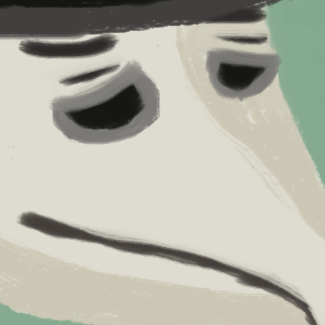
This cold open then segues into an average day at work for a doctor, Chigusa Masamitsu, who specializes in treating a mysterious condition called fūranshō, or Aerodema in the English translation. We learn that people afflicted by this disease first enter a comatose state often mistaken for death, before awakening alive but deeply changed, suffering from delusions and hallucinations as well as the gradual decay of their organs. Aerodema patients have historically suffered abuse and dehumanization, as their symptoms led others to believe that they were no longer living, sentient human begins—but now, in Chigusa's time, advances in medical technology allow for those with access to treatment to manage their symptoms, some even living mostly independently and continuing to pursue their careers after diagnosis. Passionate about improving conditions for "hihiru" in Japanese society, Chigusa embarks on a field study to visit patients living in rural areas with their families, reporting on any issues he finds in hopes that the government will allocate more resources to their care. The narrative perspective alternates between Chigusa and a high school student in Tokyo, Tenma Takeo, weaving its way through an exploration of how this disease touches both of their lives.


At first glance, Hira Hira Hihiru is a far cry from Setoguchi’s previous work and seems to play against his strengths—nothing could be further from the truth. The combination of a period piece and this bizarre fictional disease lulls the reader into a false sense of detachment, into expecting something less disturbingly relatable than a typical Setoguchi title, but it only takes an hour or two for the elephant in the room to become unignorable: our world is not all that different from Hira Hira Hihiru’s. The subjects explored in depth here, from bigotry and segregation to education inequality and the underfunding of healthcare systems, are not just historically accurate but analogous to current sociopolitical issues. The game’s portrayal of illness is authentic and devoid of sensationalism; fuuranshō comes off not as a ‘zombie virus’ but as an ordinary disability, an everyday part of not only the lives of the characters in the game, but our lives and society. The smart decision to give the disease distinct physical and mental symptoms allows it to represent and comment on several real-world conditions (dementia, schizophrenia, and leprosy to name a few) and the system Chigusa investigates, where the families of patients are required to build confinement cells in their own homes, was in fact a real system Japan had at the time for dealing with the mentally ill. When reading the devastating sequence about a religious family who are scammed into rejecting the advice of medical experts and abusing their hihiru daughter in the hopes of curing her by ‘driving out the demon,’ it’s hard not to think of practices like conversion therapy and anti-vax movements.
Throughout the game, fuuranshō is explored from a range of diverse perspectives. We’re shown the burden of the illness on its sufferers, their carers, their families, their neighbourhoods, on women and men, the young and the elderly, the rich and the poor, on patients who have received medical attention and those who have gone untreated, on patients with mild symptoms and those who are left severely disabled. We’re privy to the beliefs of lawmakers, medical professionals, and laypersons from around the country about the condition and its treatment. These beliefs are in conflict with one another, with the prospect of a consensus serving as the ambitious dream of the game’s most eccentric character. Critically, there are no bad actors or antagonists in Hira Hira Hihiru, nobody to pin the story’s tragedies on; even characters who abuse hihiru are depicted not as detestable but as ignorant or hurting, as victims of an uncaring world and an unfair system. It is, at its core, the story of people trapped in harrowing, unsolvable situations trying their hardest to act with compassion and treat one another with respect, even as that becomes harder by the day. It’s not a dramatic story with high highs and low lows but a quiet, intimate, gentle story—even the use of the word “hirahira,” an onomatopoeia for the fluttering of a bird’s wings or the flickering of a flame, in the game’s title serves to reinforce this image of fragility. It has no need for extravagant catharsis when its technical writing quality and the precision of its plotting are able to effortlessly elicit emotional significance and intensity from the simplest gestures of kindness.

The nuance the game brings to its subject matter is also reflected in its narrative structure. It’s something I’ve never seen in a visual novel before, more closely resembling, like… the 2014 Tim Schafer game Broken Age? There has to be a better example than that. Help me out, Doc.

Honestly, the closest comparison that comes to mind for me is the non-fiction book How To Survive A Plague by David France, which chronicles the history of the AIDS epidemic, with particular focus on its impact on gay men in the United States. The book paints a picture of a variety of people affected by HIV and AIDS, from scientists struggling to treat and understand the disease; to activists fighting against homophobia, ignorance, and inaction; to personal stories of people the writer knew who lost loved ones or succumbed to the illness themselves. Just as Hira Hira Hihiru excels at exploring the logic behind all manner of wildly conflicting views, engendering sympathy even toward characters whose actions may at first seem unforgivable, How To Survive A Plague provides explanations for how many harmful misconceptions about the AIDS epidemic could seem believable, and how widespread systemic issues contributed to the spread of the disease as well as to discrimination against those struggling to survive it. Like you said earlier, Hira Hira Hihiru's story is one that—while deeply detailed and specific in its historical setting and depiction of a unique, fictional disease—ultimately feels grounded in reality and in relatable human emotion, and has a lot of relevance to contemporary issues. I would genuinely recommend How To Survive A Plague to anyone who was as touched emotionally by this visual novel as I was.

I can't believe it. I was trying to set you up for failure grasping for a game with the same structure and you just completely dodged it by having a pre-prepared monologue about AIDS ready to go like a true master of blogging. Zodi and Gren don't stand a chance.
The deal is, Hira Hira Hihiru cuts back and forth between these two parallel storylines which rarely intersect, but are sequenced in such a deliberate way that their plot developments appear to be in conversation with one another. Even the chapter titles are integrated into the narrative experience at some memorable points, tormenting the reader with ominous foresights that hang over your head and force you to suffer first-hand the characters’ anxiety and hopelessness against foregone conclusions. In every playthrough you’ll get an ending for each storyline, so it’s possible to see, say, Chigusa’s “good” ending and Takeo’s “bad” ending in the same run and vice versa. The endings are poignant but appropriately lowkey, representing rather slight diversions from one another—I imagine this might disappoint some readers, but I think they’re effective for this very reason. There are some tragedies that can’t be avoided no matter how well you play your cards, but how you respond to them is still significant. The path you take through the game is determined by just four choices, but they’re all incredibly difficult decisions without clear right answers; each one took at least a minute or two of deliberation from me my first time through. The game is designed to react to your choices in elaborate and surprising ways, so you’ll be rewarded for engaging with it like this rather than resorting to a walkthrough or trying to metagame it.

ANIPLEX.EXE’s first batch of games from 2020 included a huge runaway success: Frontwing and Makura’s ATRI, which currently sits at 13,000 Steam reviews and has a full TV anime adaptation scheduled for next year. I’m guessing some of the profits from ATRI helped fund Hira Hira Hihiru or that its success encouraged Aniplex to funnel more money into the brand, because this game is extremely well-made, with a lot of care afforded to every aspect of its presentation. The score was handled by my favourite eroge composer MANYO, and given the time period, it’s hard not to be reminded of his amazing Kara no Shoujo soundtracks while reading. His work here is modest but stirring, deftly covering any mood the game calls for with his usual gorgeous analogue instrumentation. The voice acting (and yes, the game is fully voiced including all bit parts and both of its protagonists) is excellent across the board, with Ueda Reina giving a standout performance as the game’s main heroine. The artwork is… well, just look at these screenshots, it’s stunning, and it’s bolstered by BA-KU’s excellent in-house scripting and UI work. While the game does have a lot of unique assets, the dynamic text presentation and use of close-up shots stretches the budget beyond even that—most any screen can feel like a CG when this much attention is given to the placement and framing of tachie on backgrounds.
The writing itself is also exceptional. I’ve always loved Setoguchi’s style (could you tell?) but it feels more polished here than ever before. This observation is nothing new, but it really does read like a novel, one that flows incredibly well from sentence to sentence and is impossible to put down. Setoguchi has this particular approach to dialogue where he eschews conversational exchanges for massive soul-bearing monologues. Obviously it isn’t ‘realistic’ for people to spew paragraphs at one another, but it’s so effective at conveying the perspectives and emotions of his characters that it feels… less “true-to-life” and more “truer than life,” as though his work was taking place in a world where everybody is 10% more honest. It’s always been one of my favourite aspects of his writing style and this game, which features some of the most endearing characters he’s ever written, is no exception.

I was also impressed by the English translation when I watched my girlfriend play the game. I had my fair share of small gripes and I think the script is, perhaps inevitably, a little plainer than its Japanese counterpart, but it has a consistent, refined writing style and meets a professional standard of quality that I wasn’t expecting. It’s clear that a lot of thought was afforded to the vocabulary and sentence structures being used, with sentences rearranged to maintain the flow wherever necessary. I was disappointed to see that some of the Japanese lines that I loved came off as unremarkable in English, but as I read along I noticed some lines that hadn’t really stood out to me originally which had suddenly become pithy and memorable in translation. I don’t have any reservations about recommending the game to people who can’t read Japanese, but I’ll let Doc, who actually read the whole game in English, have the final say on the matter.

A good literary translation is almost like an adaptation in itself, transforming the original work to fit a different format, maintaining the spirit of the source while making some new creative decisions to suit the altered version. Great care was clearly taken with the English translation of Hira Hira Hihiru in order to reach this difficult balance, with even the name of the central disease being altered to be more understandable to an English-speaking audience; "Aerodema" combines a Greek prefix and suffix relating to flight or air and the body respectively to create a term that sounds like it could be a real disease as well as conjuring up the image of one's body drifting away from them—something that could apply to Aerodema patients losing control of themselves, or physically losing parts of their body to decay, or even to the feeling their loved ones may have that they've lost someone close to them, when that person's living and breathing body is still there. And that flying imagery also serves as a way of localizing the "hirahira" onomatopoeia that doesn't directly translate! Another translation choice that stood out to me was high school students trashing their cafeteria (makanai seibatsu) being described as a "mess hall mess-up". Like Beef said, while it's inevitable that some of the subtleties of the original might not make it into a translation, the English version also has its own beautiful and impactful lines, perhaps highlighting different moments than the Japanese text did, but nonetheless conveying the same emotion. I think the fact that we both loved this story, and agreed about much of our analysis and interpretation of it despite reading it in different languages, is a testament to what the translators accomplished. If only DDTプロレスリング had translation like this so I could finally understand what the hell is going on over there.


There’s a moment in Hira Hira Hihiru where Takeo embraces a weeping Haruko and, noticing how fragile her body feels in his arms, appreciates for the first time just how much she’s endured to make it this far and starts to cry. I think this captures what’s so special about the game to me. It’s a story about frailty and vulnerability, about what it means to care for one another in a world that doesn’t care about us, about those tiny moments of unexpected kindness and understanding that seem insignificant or obvious to the person giving them but stick with the recipient forever. Despite being so resolutely somber and confronting, the game is, at its core, tender and warm. It’s a perfect introduction to Setoguchi and will be my new go-to recommendation for anybody who expresses interest in his work; the fact that it’s the first thing he’s written to receive a competent English translation is just the cherry on top. You owe it to yourself to check it out if you haven’t already.
Unfortunately, the ref has informed me that our time here is up and we need to clear the ring to make way for our evil rivals, who I hate: the despicable ZodiKafka and loathsome Gren!
Geminism
BY GOD THAT'S ZODI'S MUSIC?!

The usefulness of genre terms is debatable but I think they're useful labels when writing reviews, a quick one word way to set the reader's expectations, however here I am struggling to really put a genre to Geminism. I wouldn't say it defies genres, since with my particular background in eroge it feels very comfortable and familiar, and quite neatly fits into a box in my skull, but I don't think this box has a commonly recognised name for it. Being a Craftwork game it seems many expected a game of the denpa genre but Geminism is not an intentionally crusty and addictive usually electronic song featuring moegoe (cute anime) vocals and lyrics about risqué otaku interests and/or memes with its origins probably in the 1998 eroge Maid in Heaven but possibly even traceable back to Togawa Jun and Suki Suki Daisuki in particular, it's a game. The game isn't psychological horror either, although there are elements of that, and it's difficult to call it a guro game since while there is grotesque violence I think the term guro tends to make people imagine something more explicit and sexual. There are elements that on the surface could make you think it's a chuuni game; like the battles and the chanting (God the mysterious men in old schoolboy outfits too), but when the mysterious men have to rush through a chant to scurry away from the cops, and they make up the rules of the battles as the game goes along I think it would be very misleading to classify it as a chuuni game. Trying to neatly fit this game inside a genre is a bit like squaring a circle wait hold on bad comparison for this post sorry sorry. The umbrella terms I tend to land on when sorting games like this one or titles by Liar-soft, or Black Cyc, or Clockup, are Girl Games or Nasty Freak Games (used interchangeably of course), and man this one's really one for the girls. I would really like that nifty one word explanation though and I do have something in mind but you're going to have forgive me since it's not a genre. Please set your expectation dial to "Playful".

One way this playfulness is readily apparent from the very start is the text itself, which is brimming with wordplay. You get all your classic favourites like uncommon kanji usage and flavour furigana but something that really sticks out is the game's use of words that repeat the same kanji. Usually when a word contains the same kanji twice in a row you'd use a repetition mark (々 this lil guy) but Geminism contains none of these repetion marks the words are fully written out every time (日々 (hibi) for example would be 日日) making the text itself full of little kanji twins. The game also plays a lot with double meanings, writing the same phonetic word or sentence in different symbols to alter the meaning. This might sound threatening to a Japanese learner but the text isn't difficult it's just very flavourful and oh lord combined with the voice performances. The main twins are of course voiced by actual twins who took on pseudonyms with the same family name for this game which I found incredibly cute but what truly activated my almonds was the performance of Pile Bunker (杯瑠 万花) the voice of Awasumi, a character who's a bit out of time. His pseudonym might not sound familiar but his voice surely will *wink wink* and hearing him struggle to pronounce words like "café" or "internet" is... it's so good. I can't believe how perfect the casting was for this role.

There's a kind of dichotomy between the mundane and the strange which is apparent through my earlier example of chuuni chants being cut short due to worries about police interference, as well as the use of uncommon kanji in otherwise regular modern language. I think this contrast shines the brightest when it comes to the everday scenes in-between the battles. The heroines of course have bigger and more romantic dreams than say; going to the grocery store, but you get this very grounded mix of disappointment and excitement in the heroines doing daily tasks which really resonates with me as someone who struggles to be functional all the time. The highlight of your day can be a shitty milkshake and you will be embarrassed about that but there's no use denying it. The battles, while featuring chuuni chanting and strange rituals, are also fairly grounded. There's mystery and magic at play, but beating someone with a bat is still beating someone with a bat. The game is full of fantastical elements but it also firmly stands with both feet on the real-ass ground which lends a bluntness to it, like say a bat. And what is the synthesis of this dichotomy you may ask? Well of course it's my mummy boyfriend telling me about fish while I'm having a phantom nut.
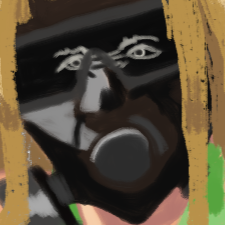
My name is Gren and I like to say! I love Geminism in a major way! Yes sir, I do and you know it's true.........is what it says here on the teleprompter.
Well, I hope everybody listened to Zodi earlier and turned their dials to “playful”, because the whole team got the memo and really went for it here. There is not a moment that passes without you considering how this work is just one big ol’ tonal playground for the people involved: it’s in the low-standing flourish of the quiet pre-shiawase scene-setting, before the inevitable transition to loud and comedic brutality; it’s also present in the tricky silence following each matchup where the victor is forced to confront the heaping mess of violence in front of them, something which is immediately followed by a match summary, fit with all the usual fanfare and a handy 決まり手 column to let you know know just what sealed the deal! I’d also be remiss not to mention the gloriously ear-shattering, mouthwateringly appetizing sipping that accompanies a body part sliding from one twin to the other post-match. Similarly, a lot of the “choices” are really only there for fun, like clicking repeatedly through a list of three identical options, all of which dish out the exact same beating—that’s right, there was truly no option to begin with! I’m sorry, Kikyou. It’s time for a wee bludgeoning. This part in particular feels like something that’d be right at home in Sayooshi, honestly. But that’s besides the point.
To put it bluntly, both the prose and presentation are incredibly versatile, and that’s just the icing on the cake. What I’m really trying to get at here is just how effortless it all feels in practice. This back and forth is above all the foundation of the game, stretching right back to the twins themselves, each “half” drooling at the heels of the other, lusting over what the other has that they don’t—when in reality, both of them are struggling plenty just to live a “normal” life. Maybe from my descriptions alone you’re thinking it sounds a little lame, a little cliche, that it’s lacking in subtlety. But gosh darn if it isn’t the slickest thing ever! I can assure you, the devil is in the details with this one. Far from being shallow, all these little things are evidence of the consideration required to make a work so harmonious.

Just look at this…If you’re gonna slap me in the face with a metaphor, at least make sure it’s a cool one, and my god this is capital A awesome. It is so exceedingly rare to see an honest-to-god unaltered portrait in this game. So much of the heavy lifting is done by creatively layered cut-ins that not only stand out—thanks to their two-tone coloring and sketch-like visuals—but also fit together in what is, more often than not, a surprisingly considered way. Conversation partners will “complete” each other’s expressions or sometimes break down entirely, meshing into a three-eyed or two-mouthed abomination that is nonetheless connected seamlessly (thanks two-tone coloring), almost like those mirrored video game covers you see online from time to time. I was looking through the Sayooshi material book recently and thinking, “Man, I'd love to have a game polluted with just Nagaoka’s sketches.” And boy did this deliver! Essentially, the fragmentation of the twins is portrayed all the way down to the visuals; you are almost never gonna see a full, unhindered facial expression in this game. And when you do, it sure as hell stands out! Every emotion is presented just how the twins feel it, disjointed and in sore need of its complement yet entirely real and visceral all the same. Right up there with the little kanji twins, I find it really hard not to get invested in something so sincere, no matter how small each detail is on its own. We are talking about the big picture here and the final product speaks to the tremendous amount of fun that was had making it, at basically every level. All these pieces, incoherent as they may be on their own, slot together into a messy collage of raw experience, something that speaks plenty to the hella fragmentary nature of making it on this bitch of an earth.

It’s abundantly clear to me that everything here wasn’t just made with love, but an outstanding sense of humor—and a truly collaborative one at that, with punchlines so enthusiastic they practically bleed across the individual features of a scene. Scenes like the one Zodi mentioned above, despite their brevity, are still processed through the same glorious chuuni filter as their more drawn-out counterparts. And that’s exactly what makes them funny. Now instead of a definitive winner you get a bolded 時間切れ popping up on center screen because the old ladies in the neighborhood are waking up and OH SHIT! We gotta run!! Sure they rush through the usual lines at lightning speed, but all the sound effects and musical cues are still there—untouched, which is just hilarious. Like this, the scripting goes out of its way to give a farce the same flair as the real deal. After all, for as much power as these dudes seemingly have, they are kinda just making shit up as they go. Overall, there are so few lines in the game that aren't instantly made better by the way they are presented: visually, textually, aurally, you name it! I really can’t ask for more, since there is nothing more infectious than fun. And oh man, is it fun to read.
That’s all to say, I think it fits pretty snugly into Craftwork’s exhaustive catalog of five whole games, despite maybe playing outside of people’s expectations. Or rather, consistency has really never been on the menu here. All those expectations are coming, after all, from one highly vindicated cult classic, a game that notoriously bombed quite hard on release. Rather than a prolific brand with hard and fast genres or ideas at play, Craftwork is and has always kind of been Nagaoka’s own personal cool kids table—something felt most strongly in the way it, well, just sat there for twenty-two odd years after Sayooshi came out. Nagaoka didn’t exactly scale back his activities because his games were flying off the shelves after all. This whole time he’s stuck pretty closely to graphic design and UI work exclusively, with the brand pretty much a name attached to him and nothing more. So the inclusion of someone like Ishino in a supervising role feels less like an obligation, especially given his lack of involvement in the industry broadly, and more like a personal reuniting of friends after life got in the way for so many dang years. It’s honestly really cute. I mean, the whole impetus for this game even getting made in the first place was the loss of a close friend—well, that and the sudden influx of cash from Sayooshi’s digital rerelease—but my point stands: this was an extraordinarily personal project, through and through. Even the dialogue around the Sayooshi anniversary event itself has a sort of passing the torch feeling to it. Aside from featuring a truly star-studded cast of industry veterans—we’re talking SCA-ji, Taninon, Sapporo, Ishino, Nagaoka, and Asahi herself (in Mutsuki cosplay, no less!) all in one place—the event also helped communicate to Nagaoka that there was still interest in a game like this existing at all.

This is of course where someone like Asahi comes in too, the new kid on the—wait, what ...you're absolutely sure? Well, okay then. Sadly, my insider sources have just informed me that I’m completely fucking wrong, my deepest apologies. Asahi has actually been around forever. Industry friend to many, frequent collaborator on Sayooshi merch—yes, that merch…the adorable anniversary stickers were all them—staunch consoomer of Suehiro Maruo goodies, and most importantly the organizer of the whole anniversary event. Asahi even released a Sayooshi doujinshi in 2009 that was supervised by Nagaoka himself, featuring a number of illustrations from him and in many ways acting as the catalyst for their future relationship. Of particular note is the bundled kakioroshi shousetsu by Ishino, which is…wow. I really wanna get my hands on this bad boy, but we’ll save that for another day (Stay tuned, skullfuckers). Otherwise, you can catch their latest work in the still running Higurashi no Naku Koro ni Oni manga, and I bet good ol’ Dr.D is quaking in their boots with that one! Heck, in 2021 they even published a free game, by the name of 腐った果実, with music by none other than Sapporo Momoko, which makes sense considering it was the same year work on Geminism’s scenario began in earnest. I recommend you check it out. It’s painfully short and is a good predictor for the kinda stuff Asahi likes. The prose is “playful”, albeit in a different manner (the main protagonist is a crow), and the climax features a kind of comedic brutality and sickening sweetness that is pretty darn characteristic of Geminism as a whole. You can even play it in your browser! Just do it, the refs will count it as a bonus point for us if you do…

Tapping in here to say that while I wasn't familiar enough with Craftwork's catalogue to judge how Geminism fit into it, I have read Asahi's full modern eroge recommendations list, and Geminism fits in wonderfully well with these games as well. I think you can see some influence from these games in Geminism as well, although it definitely has its very own unique style to it. Seeing this list made me feel a lot more confident about putting Geminism in the Girl Games box. As a part of this wider tradition in eroge that's difficult to really nail down, but that you can never mistake the feeling of. I would back up all of the recs on the list as well, several games on here I might write about someday™ in the future. I'll be back later to deliver a real suplex okay, I'll stand outside the squared circle and like flex for now.

Thanks for the quick backup, Zodi! I honestly think we're starting to win em over here. I mean, who wouldn't fall head over heels for Asahi after hearing all that!! Did I also mention that Asahi even went on record saying Sayooshi was One for the girls? But what's this??? I hear the audience crying out for answers still: “Why did you bring up Suehiro Maruo?” Geez, you're still not satisifed!? I have no choice then...time to answer the call for more quality ass whooping. Well, I’ll keep it short since I can see Zodi itching to jump back in the ring. What I am about to do is list off a bunch of dubious connections that you may, or may not, find sorta interesting.

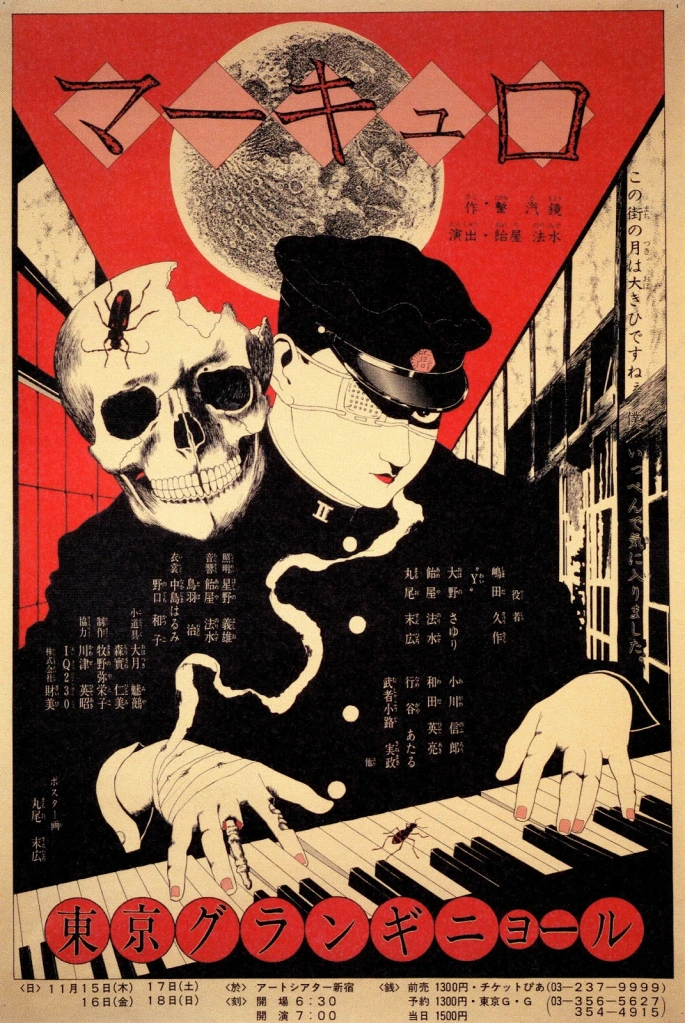
Our story begins in 1983 with the founding of the Tokyo Grand Guignol theater group by one Ameya Norimizu. Oh yeah, we’re going there! The connection here is pretty obvious at least. Ameya founded the group in the first place hoping to adapt Suehiro’s unique worldview to the stage and, needless to say, it went pretty well. Both Ameya and Suehiro worked together pretty closely thereafter, with Suehiro illustrating tons of promotional material for the group and even acting in some productions before its disbanding in 1986. In the end, despite its short stay—and the fact that a lot of their work, including much lusted after lost media like ライチ☆光クラブ, isn’t even accessible—the group was successful in spreading Suehiro’s sickly sensibilities to a new generation of guro fans, one such fan being Asahi herself. Now of course Asahi wasn’t around to actually catch any of these performances, something they seem pretty sad about, but the inspiration is easy to spot. Well, I guess that much is true even glancing over Suehiro’s larger body of work. It’s no secret the kind of influence someone like Ohtsuki Kenji had on Nagaoka and just about everyone else at Craftwork. Likewise, Suehiro was no stranger to working with Kenji, providing the cover illustration for his 1993 novel 新興宗教オモイデ教, among other things. The point I’m trying to make is that we have quite the complicated web of influence on our hands here, one that could easily occupy a whole post on its own—just look at Ameya’s career afterwards, it’s pretty fucking wild. You could ask me then why I’m focusing on theater productions specifically, but I think it’s pretty likely Geminism isn’t drawing from Suehiro’s manga work exclusively given all its theatrical trappings. What’s being channeled here is a very familiar feeling—a gakuran-loving, cigarette-smoking, abandoned building-squatting, ero guro-loving kind of feeling. And if you wanna read more about the exact feeling I’m describing, I recommend this post right here.
Which brings me back to where we started. Being Nagaoka’s own personal brand, Craftwork has and always will be a place where he tosses around ideas with creators he respects an awful lot; Asahi is just his latest buddy, that’s all. The rough concept of the game was still very much Nagaoka’s own, don’t get me wrong, Asahi merely brought their own unique flavor in the process of…well, turning it into a story. Which is basically what I wanted to highlight here. "I think it's quite special a game like this got made at all" and "I can really feel the love from everyone involved"...is sorta what I wanted to get across.
Needless to say this tangent has gotten out of hand, so let’s wrap this generational baton pass up and hand things back to Zodi, pronto!

I'm back baby and I'm here to answer the question that you've all been asking this whole time! It's been on your lips through this whole live on air pay per view extravaganza, even before you got to the Geminism part surely! Is Geminism a gay game??? If we go simply by gender of participants in sexual content then Geminism is straight, but any reader of dark eroge (girl games) knows that dark nonkege (straight games) like this tend to be dubiously straight if not outright queer, see basically any game by Black Cyc. Izumi Ban'ya (Extravaganza, Nikuniku, Mugen Renkan) has a tendency to sneak lesbians into his games and well so does Marutani Hideto (Jorou Gumo, France Shoujo), Tokyo Necro which man released in 2016 God dude I thought it was recent anyway it's super gay. So what about Geminism? I think there's no question about it being dubiously straight "and surely", I hear you saying "A game where two girls are locked in mortal combat, surely there's some tension there a spark of gay", I hear you remember the mysterious men watching the girls and you say "Surely this is eroticism, surely this is romantic". But if you want to find out the true answer to this question you'll have to look inside yourself after having bought and played Geminism on DMM dot com.
WHO WON? WHO’S NEXT? YOU DECIDE!

IT'S ME, ZODI!! I mean, it's me (beef2929) again! Thank you to everyone who showed up for making it all the way out to the ring tonight for our inaugural match. But if you’ll allow me to break kayfabe for a second… these games don’t really have to compete with one another, do they? I’m sure you’ve noticed by now that they’re vastly different beasts with distinct selling points and, fuck, they even share principal staff! taninon is the producer and scripter of Geminism; Nagaoka is credited for logo and UI design on both of BA-KU’s games. I figured the ‘competitive eroge review’ angle would be a killer framing device, but as funny as it is to picture these games as twin sisters battling it out, I don’t think it has to be that way. These are two well-made half-price games from creators who deserve your support, just buy both of them! Make it a double feature!
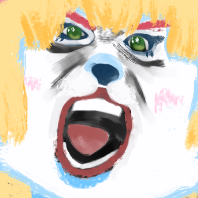
Oh yeah!? Koala I remember way back when when the MEGA POWERS were bonded! You made a lot of PROMISES to the Zodi didn't ya? Promises that you didn't keep.... I remember one specific one YEAH you promised we'd play the 2006 BL eroge Messiah released by CORE. YOU BROKE THAT PROMISE DIDN'T YOU KOALA!? And who had to come in and make the ideal beats of the summer eroge playlist [COMING SOON to SKULLFUCKERS dot wordpress dot com] for you? THE ZODI covering for Koala AGAIN! Koala I only tell you to play games when it's absolutely necessary! When you're DOWN AND OUT! That's the kinda rules I play by! But you... you play by different rules yeah... you gotta get your grandstandin' and your hotdoggin' YEAH!? I remember a time when I was reading 2010's beloved cult classic Gakuen Handsome by Team YokkyuFuman together WITH YOU! But when it came to Messiah you didn't show up since you had to get your grandstandin' and hotdoggin' in... YOU Koala YEAH! You just couldn't stand to sit back with your feet up and read BL with the CHAMPION well look at this PRIMA DONNA!!!

ALERT: This polling booth is temporarily closed. SKULLFUCKERS Enterprises apologise for the inconvenience.
KOALA NOT ONLY ARE YOU A HOTDOGGER A GRANDSTANDER AND A PRIMA DONNA YOU'RE A COWARD TOO!! LET THE FANS DECIDE WHO COMES OUT OF THIS CAGE (and I've been doing just fine) WITH THE BELT!!!

While I wait for the audience at home to decide our fates, I'll take the opportunity to say thanks to Dr. Dysphoria, Zodi, Gren, and YOU for joining us! We have a lot of things, like, way too many things planned so stay tuned! That playlist is a real thing and oh man is it coming. And of course, you can find Hira Hira Hihiru on Steam or DLsite and Geminism on DMM.